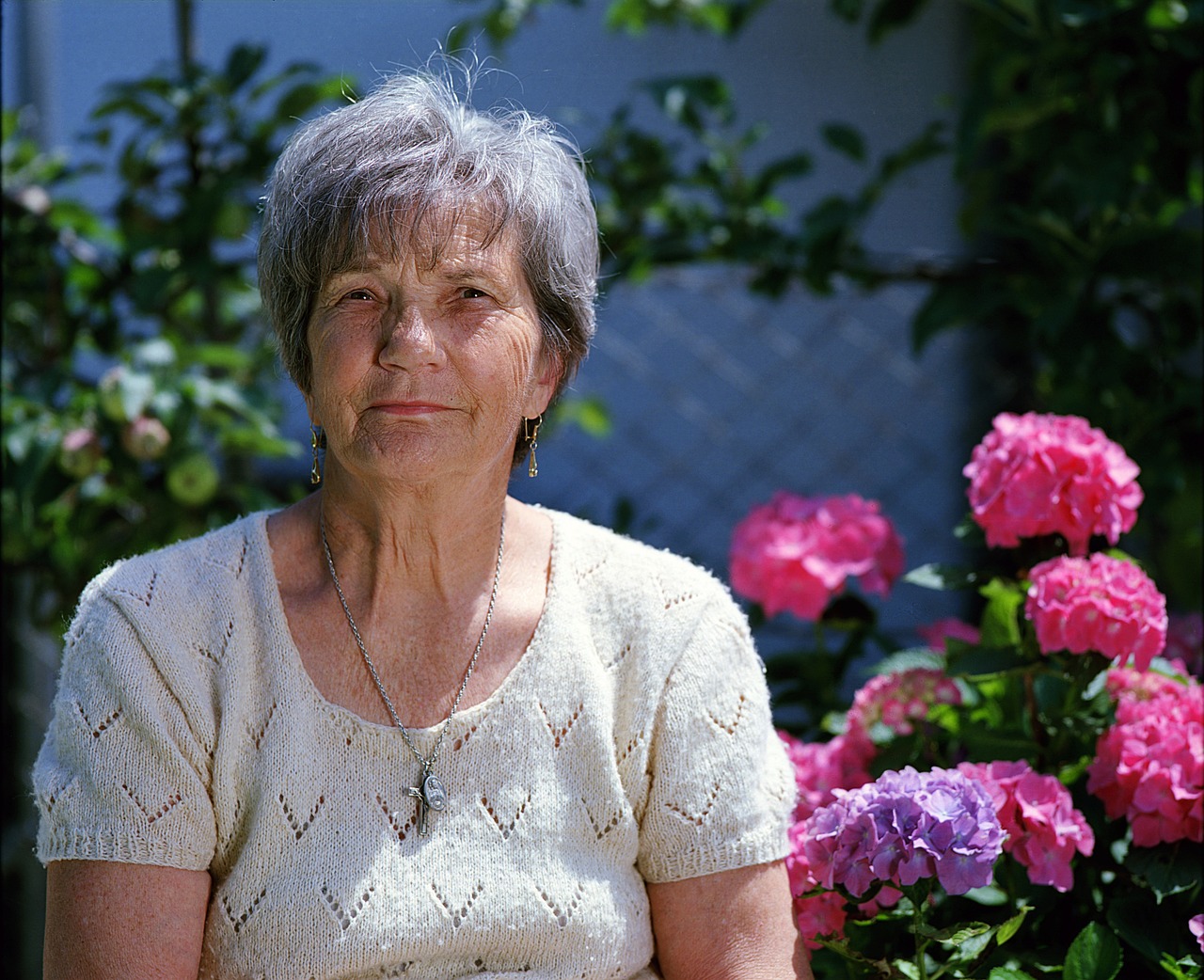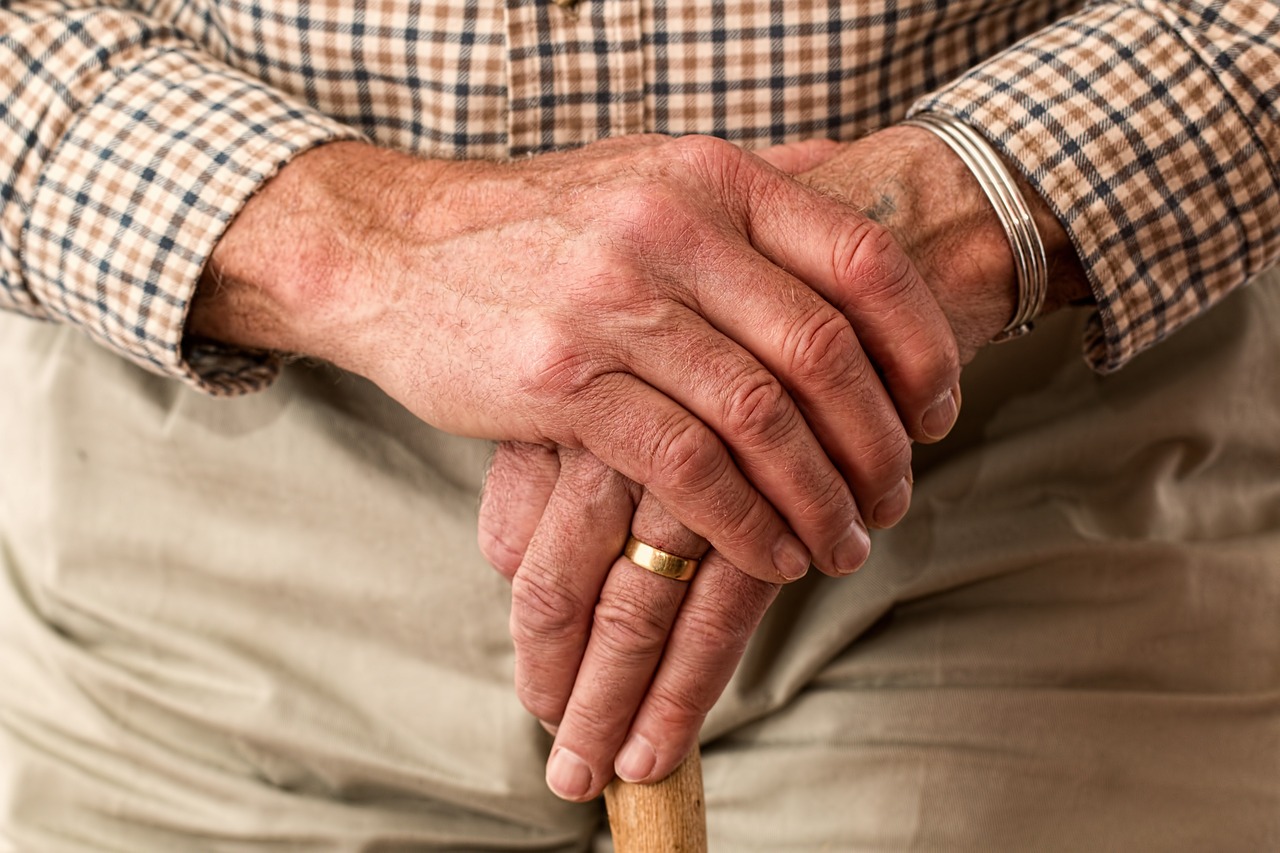As you welcome an elderly loved one into your home, ensuring their safety becomes of utmost importance. By making a few simple adjustments and taking preventive measures, you can create a safe and comfortable environment for them. From installing handrails and grab bars to reducing tripping hazards and improving lighting, this article will provide you with practical tips and insights on how to make your home a haven for an elderly person. So, let’s get started on creating a secure and tranquil space where your loved one can feel protected and at ease.
1. General Safety Measures
Ensuring the safety of an elderly person in their own home is of utmost importance. By implementing these general safety measures, you can create a safe and secure environment for them to live independently.
1.1 Remove Tripping Hazards
One of the most common causes of accidents for elderly individuals is tripping over objects in their path. It is vital to remove any potential tripping hazards, such as loose rugs, cords, or cluttered walkways. Keep the floors clear to provide a safe and obstacle-free space.
1.2 Ensure Sufficient Lighting
Proper lighting is crucial for preventing falls and aiding elderly individuals with their vision. Make sure that there is sufficient lighting in all areas of the home, especially in hallways, staircases, and entrances. Install brighter bulbs or consider using motion sensor lights to guide their way.
1.3 Install Grab Bars
Installing grab bars in key areas of the house, such as bathrooms, hallways, and near stairs, can greatly enhance safety for the elderly. These bars provide additional support and stability when necessary and can be a lifesaver in preventing falls and accidents.
1.4 Use Non-Slip Mats
Using non-slip mats in areas prone to wetness, such as bathrooms and kitchens, can significantly reduce the risk of slips and falls. These mats provide an added layer of grip and stability, even on slippery surfaces, ensuring the safety of your loved ones.
1.5 Secure Rugs and Carpets
Rugs and carpets can present a hazard if they slide or bunch up. Secure them with double-sided tape or slip-resistant pads to prevent any potential accidents. By keeping the rugs in place, you minimize the risk of tripping or losing balance.
1.6 Clear Clutter and Excess Furniture
A clutter-free environment is crucial for the safety of the elderly. Remove unnecessary furniture that obstructs pathways and ensures that there are no objects lying around that could pose a tripping hazard. Keep the living spaces open and free from any unnecessary obstacles.
1.7 Provide Sturdy Handrails
Handrails are essential for maintaining balance and stability, particularly on stairs and steps. Make sure that the handrails are securely fastened and at an appropriate height for the elderly person to grip comfortably. Regularly check the handrails for any signs of damage or loosening.
1.8 Keep Emergency Numbers Handy
In case of emergencies, it is important to have emergency numbers easily accessible. Place a list of important numbers, including local emergency services, family members, and healthcare professionals, in a prominent location that is easily visible and within reach.
1.9 Install Smoke and Carbon Monoxide Detectors
Installing smoke and carbon monoxide detectors in strategic locations throughout the house is crucial for the safety of the elderly. These detectors can alert them to potential hazards and give them ample time to evacuate safely. Make sure to regularly check and replace the batteries in these devices.
1.10 Maintain Adequate Temperature
Maintaining a comfortable and consistent temperature in the home is essential for the well-being of the elderly. Ensure that the heating and cooling systems are functioning properly and regularly serviced. Providing a comfortable temperature can help prevent health issues related to extreme heat or cold.
2. Bathroom Safety
The bathroom is one of the most accident-prone areas in the house, particularly for the elderly. By implementing these safety measures, you can significantly reduce the risk of injuries.
2.1 Install Grab Bars
Installing grab bars in the bathroom can provide much-needed support and stability for the elderly. Place grab bars near the toilet, in the shower or bathtub, and around the sink to assist with balance and prevent slipping.
2.2 Use Non-Slip Mats
Non-slip mats are essential in the bathroom to prevent slips and falls. Place them on the bathroom floor, in the shower or bathtub, and in front of the sink. These mats help create a non-slip surface, even when wet, reducing the risk of accidents.
2.3 Adjust Water Temperature
Elderly individuals may have difficulty sensing water temperature, which can lead to scalding or burns. Adjust the water heater to a safe temperature, around 120 degrees Fahrenheit, to prevent any accidental injuries due to hot water.
2.4 Raise Toilet Seat Height
Consider raising the height of the toilet seat to make it easier for the elderly to sit down and stand up. This can be done by adding a raised toilet seat or using a toilet seat riser. A higher seat reduces strain on the knees and makes using the bathroom safer and more comfortable.
2.5 Ensure Adequate Lighting
Proper lighting in the bathroom is crucial for elderly individuals to see clearly and avoid accidents. Install bright lights or consider adding additional lighting sources near the mirror, above the bathtub/shower, and around the toilet area.
2.6 Provide Easy-to-Reach Essentials
Arrange essential items such as towels, toiletries, and medications within easy reach. Place them on lower shelves or in accessible cabinets to avoid the need for reaching or bending over, which can increase the risk of falls.
2.7 Install a Shower Bench or Chair
A shower bench or chair provides a safe and stable seating option for the elderly while showering. This allows them to comfortably sit and reduces the risk of slipping or losing balance. Make sure the bench or chair is sturdy and has rubberized feet for added safety.
2.8 Add Handheld Showerhead
Replace the standard fixed showerhead with a handheld showerhead. This allows for greater flexibility and control while showering, making it easier for the elderly to reach all areas comfortably. It also reduces the risk of falls and accidents due to limited mobility.
2.9 Use Toilet Safety Rails
Toilet safety rails can provide additional stability and support for elderly individuals when using the toilet. These rails are mounted beside the toilet and can assist in sitting down and standing up, reducing the risk of falls.
2.10 Consider Walk-In Tub
For those with limited mobility, a walk-in tub can be an excellent investment. These tubs have a door that allows the individual to step in without having to lift their legs over the bathtub wall. This eliminates the risk of falls associated with entering and exiting a traditional bathtub.

3. Bedroom and Living Areas
Creating a safe and comfortable environment in the bedroom and living areas is essential for the well-being of the elderly. By following these safety measures, you can ensure a secure living space for your loved ones.
3.1 Choose Appropriate Bed Height
Select a bed that is at an appropriate height for the elderly individual. Lower beds make it easier for them to get in and out of bed safely, minimizing the risk of falls. Additionally, consider using a bed with a firm mattress for better support.
3.2 Ensure Clear Pathways
Clear pathways in the bedroom and living areas are essential for preventing falls. Remove any obstacles or excess furniture that may obstruct the walking path. Keep the areas well-organized and free from clutter to create a safe environment.
3.3 Provide Bedside Rails
Bedside rails can provide additional support and stability for elderly individuals while getting in and out of bed. These rails can be attached to the bed frame, offering a secure grip for individuals with limited mobility.
3.4 Use Nightlights
Place nightlights in the bedroom, hallway, and bathroom to ensure visibility during the night. Elderly individuals often struggle with nighttime navigation, and having adequate lighting can prevent tripping or accidentally bumping into objects.
3.5 Make Sitting and Standing Easier
Consider using chairs or sofas with firm cushions and armrests to make sitting and standing easier for the elderly. These features provide extra support and stability, allowing them to maintain balance and prevent falls.
3.6 Arrange Furniture for Accessibility
Rearrange furniture in the bedroom and living areas to optimize accessibility for the elderly. Ensure that commonly used items are within easy reach, and that they don’t have to strain or stretch to access them.
3.7 Optimize Storage Solutions
Utilize storage solutions that are easy to access and organized. This could include lower shelves, drawers, and baskets that allow for easy retrieval of items without the need to bend or reach overhead.
3.8 Check Bedding for Safety
Ensure that bedding is secure and does not present a risk of entanglement for the elderly. Avoid loose bedding or sheets that can cause trips or falls. Make sure that the mattress is in good condition and properly supports their body.
3.9 Consider Adjustable Beds
Adjustable beds can offer customizable comfort and support for the elderly. They can help alleviate back pain, improve circulation, and make it easier to get in and out of bed. Adjustable beds can be particularly beneficial for individuals with mobility issues or chronic conditions.
3.10 Implement Fall Prevention Measures
Implement additional fall prevention measures in the bedroom and living areas. This can include installing handrails along the walls, using non-slip flooring, and ensuring that cords and wires are safely managed and out of the way.
4. Kitchen Safety
The kitchen can pose various hazards for the elderly, but with these safety measures in place, you can create a safe and functional space for them.
4.1 Organize Cabinets and Pantries
Keep cabinets and pantries well-organized to prevent items from falling and causing accidents. Store commonly used items at waist height to minimize reaching or bending. Consider using adjustable shelves and pull-out drawers for easier access.
4.2 Ensure Proper Lighting
Good lighting is crucial in the kitchen to prevent accidental cuts, burns, or spills. Install bright lights over work areas, stove, and sink. LED lights under cabinets can also provide additional illumination and enhance visibility.
4.3 Install Anti-Scald Devices
Install anti-scald devices on faucets to prevent accidental burns from hot water. These devices regulate the water temperature and help maintain a safe level of warmth. This is particularly crucial for elderly individuals who may have reduced sensitivity to heat.
4.4 Use Safety Features on Appliances
Ensure that kitchen appliances have built-in safety features, such as auto shut-off or timers. This can prevent accidents if the appliance is accidentally left on or forgotten. Check that all appliances, including stovetops and ovens, are in good working condition and regularly maintained.
4.5 Keep Fire Extinguisher Accessible
Keep a fire extinguisher easily accessible in the kitchen. Familiarize yourself and the elderly person with its use and location. Regularly check the expiration date, and if necessary, replace the fire extinguisher to ensure its effectiveness.
4.6 Secure Pot and Pan Handles
To prevent accidental spills, ensure that pot and pan handles are securely fastened. Turn handles inward, away from the edge of the stove, to minimize the risk of bumping into them or causing them to tip over.
4.7 Use Non-Slip Flooring Mats
Place non-slip flooring mats near the sink and stove areas to prevent slips and falls. These mats provide an extra layer of grip and stability, even in a potentially wet environment.
4.8 Adapt Utensils and Cookware
Consider using adaptive utensils and cookware designed for individuals with reduced dexterity or strength. These specialized tools can make meal preparation safer and more accessible for elderly individuals.
4.9 Install Childproof Locks for Cleaning Supplies
If there are young children in the household or the elderly person has cognitive impairments, install childproof locks on cabinets containing cleaning supplies or potentially harmful substances. This ensures that these items are safely stored and out of reach.
4.10 Promote Proper Food Handling
Educate the elderly person on safe food handling practices, such as proper cooking temperatures, storing perishable items, and avoiding cross-contamination. This helps prevent foodborne illnesses and ensures the safety of the meals they prepare.

5. Staircase Safety
Staircases can be particularly hazardous for the elderly, but by implementing these safety measures, you can minimize the risk of falls and accidents.
5.1 Install Stair Railings
Installing sturdy handrails on both sides of the staircase provides crucial support for the elderly. Make sure the handrails are securely fastened and extend the full length of the stairs to ensure maximum stability.
5.2 Add Staircase Lighting
Proper lighting on staircases is essential for preventing falls. Install bright, non-glare lights on each step or consider using motion sensor lighting that activates when someone approaches the stairs.
5.3 Implement Non-Slip Treads
Apply non-slip treads or tape to each step of the staircase to provide additional traction and grip. This prevents slipping, especially when the stairs are wet or if the individual is wearing socks or slippers.
5.4 Keep Stairways Clear
Ensure that the stairway is clear of any objects or clutter that may obstruct the path. By keeping the staircase clean and unobstructed, you reduce the risk of tripping or losing balance.
5.5 Use Stair Lift or Chair Lift
For individuals with significant mobility challenges, installing a stair lift or chair lift can be an excellent solution. These devices assist individuals in safely navigating the stairs without the need for physical exertion or the risk of falling.
5.6 Secure Loose or Wobbly Steps
Check each step of the staircase for loose or wobbly steps. These can greatly increase the risk of accidents and falls. Repair or replace any unstable steps promptly to ensure the safety of your loved ones.
5.7 Paint Step Edges for Better Visibility
Consider painting the edges of each step in a contrasting color to enhance visibility. This makes it easier for the elderly to differentiate between steps, reducing the risk of missteps or trips.
5.8 Remove Loose Carpets and Runners
If you have loose carpets or runners on the stairs, consider removing them as they can pose a tripping hazard. Stairs should have a clear and consistent surface to prevent accidents.
5.9 Install Handrail Extensions
Handrail extensions can be installed on existing handrails to provide additional gripping height for the elderly. This allows them to maintain a comfortable hand position and increases stability on the stairs.
5.10 Consider Ramps or Elevators
In cases where stairs are a significant barrier, consider installing ramps or elevators to improve accessibility within the home. These modifications can be particularly beneficial for individuals with mobility limitations.
By implementing these comprehensive safety measures throughout your home, you can create a safe and secure environment for elderly individuals. It is important to regularly evaluate and update these measures as the needs of your loved ones may change over time. Remember, a safe home promotes independence, confidence, and peace of mind for the elderly person and their loved ones.
